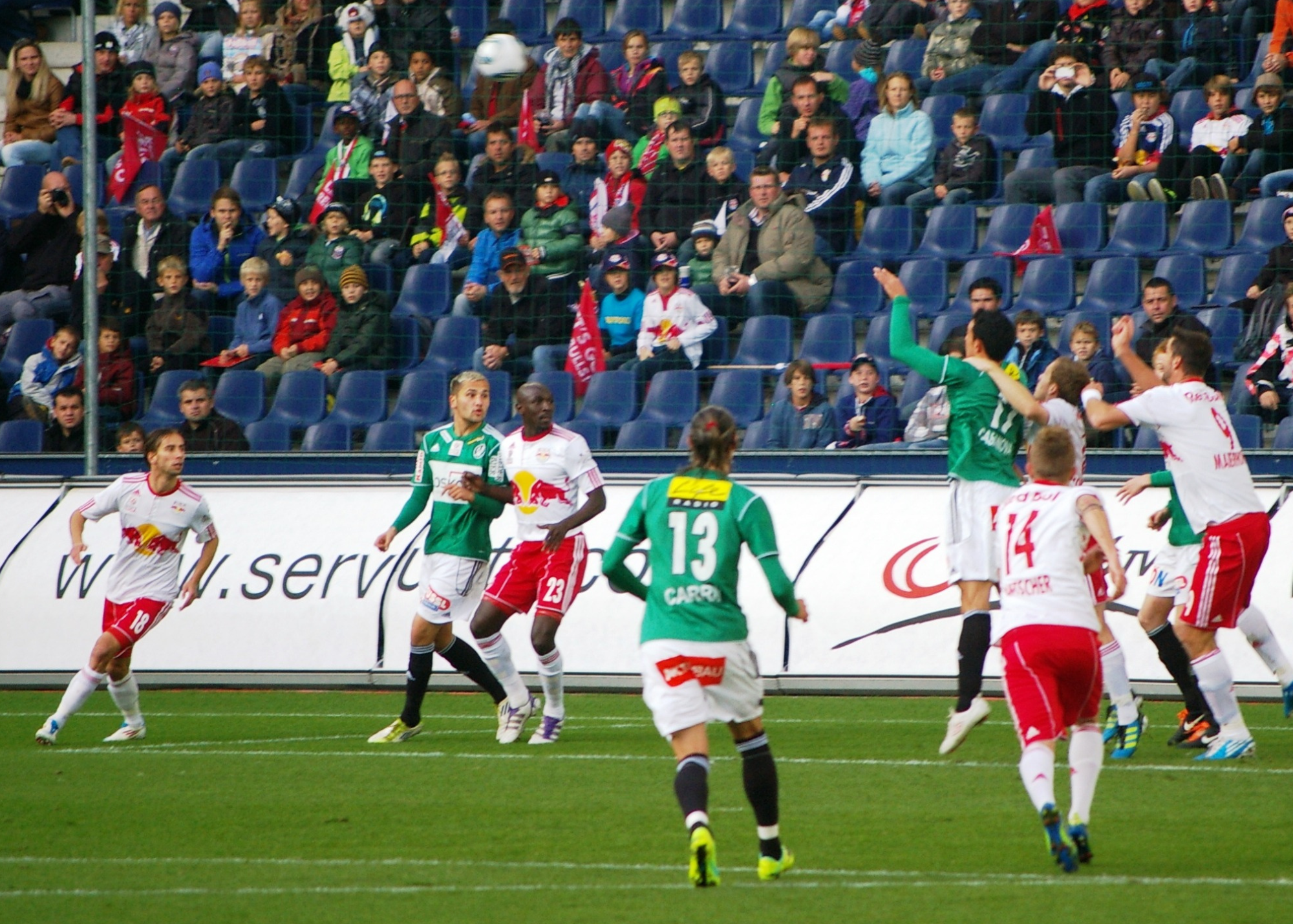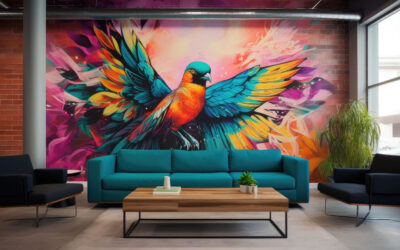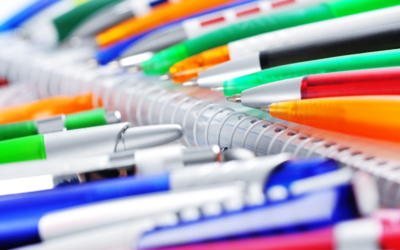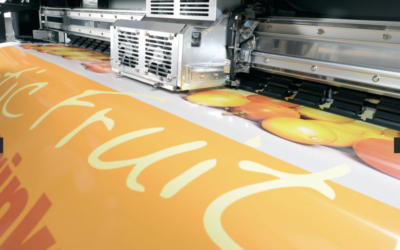The sublimation process needs pressure, time, and heat. And, of course, the right sublimation printer. So, how do you determine what type of sublimation printer to buy? It depends on your budget and what you’re going to make.
A desktop model, which is considered an entry level sublimation printer, prints in a small format using sheet media. You can purchase this option for $250 and up and use it to print smaller promotional items.
A wide format sublimation printer, which includes 44”, 64”, and 72” options, costs around $25,000. A 44” printer works well for promo items like t-shirts, socks, small dry erase boards, awards, etc. A 44” printer uses rolled media rather than sheet media like a desktop printer.
A 64” printer is a good option if you’re doing cut-and-sew jobs, such as making jerseys and team apparel. And a 72” printer is ideal if you’re making customized flags.
Grand format printers are bigger than 72” and can run as high as $250K. If you’re in the trade show or POP markets, you’ll need a 124” printer to create large displays, like the fabric signs that are backlit in airports. Keep in mind that people will see these large displays from a distance, so they must be attention grabbing, with bright, eye-popping colors, but you won’t have to worry about achieving perfect detail up close.
Different manufacturers, including Mimaki, Mutoh, and Roland, offer sublimation printers, each with different price points and technologies. When looking at these different brands, consider what types of print heads and technologies they each put into their printers. Since sublimation printers use water-based ink, you must use very specific print heads to make your products look fantastic.
Many bigger printer brands now offer sublimation printers, and Marabu’s best-in-class sublimation inks support them all.
Crank up the heat
With sublimation, you’ll send your customer’s image from your computer to the sublimation printer, which uses special ink (like Marabu’s DX-STE) and a specific type of paper made for sublimation printing and heat transfer. You’ll print everything in reverse on the special paper, then take the paper to the heat press and press the image onto the object. Since the heat transfer press gets very hot — up to 400 degrees — it turns the ink into a gas, which then bonds to polyester or poly blend fabrics and other substrates. (Note: this method doesn’t work on 100-percent cotton.)
When choosing your sublimation printer, consider how fast you’ll need to print your items. For instance, if you’re going to produce uniforms for sports teams, you’ll need a fast printer.
Sublimation printers have been around for several decades, but they’ve recently become much easier, faster, and more widely used.
Look for these must-have features.
Quality, speed, and support are the top three things to look for in a sublimation printer.
You’ll also need good color profiles, which are sometimes made specifically for the substrate you’re using. For example, if you’re creating athletic apparel for collegiate teams — football, cheer, wrestling, etc. — the colors need to be precise and match the school colors exactly.
It’s important to determine whether the printer you’re contemplating comes with raster image processor (RIP) software and color management, or if you’ll need to buy the software separately. The RIP software looks at all details of the image and processes it to print, so this is a big consideration, as you’ll need good RIP software driving your printer.
What are the advantages of sublimation printing?
Sublimation may not be the easiest kind of printing since you have a heat transfer as part of the process, but sublimation can do things that screen printing cannot, like bonding ink onto a variety of substrates for a high-end look and feel.
For instance, suppose you’re creating customized polyester shirts, pajama pants, socks, and other apparel. When you use sublimation printing to put customized images on the fabric, the ink sublimates into the item and bonds to the material to create a permanent image. Unlike screen printing, you can’t feel the ink at all. This method is extremely durable and, in most cases, the fabric will break down before the ink does.
You can create very cool graphics with sublimation printers. It’s easy to do small, customized runs with different images and product sizes. And printers can enjoy amazing margins on these jobs.
In addition to printing t-shirts, pajama pants, socks, and other apparel, sublimation is a wonderful way to create customized mousepads, lanyards, license plates, coffee mugs, metal objects, interior displays, and other promotional items.
Sublimation printing provides an upscale look and feel that’s unlike any other printing method. When printing on fabric, for instance, the end result looks and feels expensive and extremely professional. When used on metal, like interior displays, sublimation inks create a stunning glossiness on the items.
When should you not use sublimation printing?
If a client wants 500 inexpensive, 100-percent cotton shirts, you’d probably want to opt for a more traditional screen printing approach for the job. This would be the less expensive route, plus sublimation doesn’t work on 100-percent cotton.
Sublimation printing is not ideal for printing items that will be out in the sun for long periods of time, like an awning for a bar’s outdoor patio or flags for the top of a ski slope’s summit. Sublimation inks aren’t as stable as solvent, UV, or latex inks and
experience degradation in the sun.
Final advice
Buy sublimation printers through a distribution partner. Select a company that can support you and recommend the best printer size and features based on your budget and needs.
Also, be patient. There’s a learning curve to using sublimation printers, and it takes some time to get the hang of it. Many people love this method once they’ve perfected the technique and use their sublimation printers to create amazing products for their customers.
If you’ve been debating getting a sublimation printer, it can be a wise investment. Sublimation printing will open up different markets for your business, allowing you to produce things like those highly in-demand pajama pants that can be customized with photos of your customers’ pets or kids. It will also take your t-shirt (and mousepad, lanyard, etc.) printing to a whole new level.
For more information about sublimation printers — as well as any other printing or ink needs — please contact us. You can receive more printing tips here.




